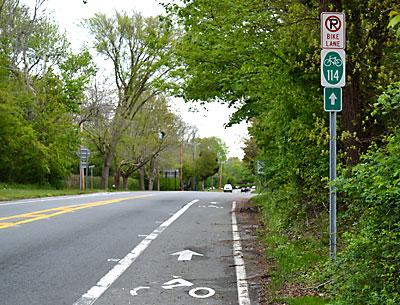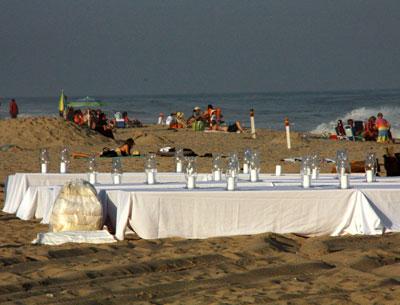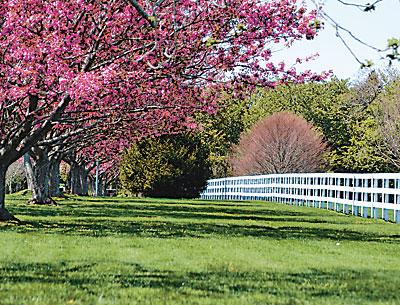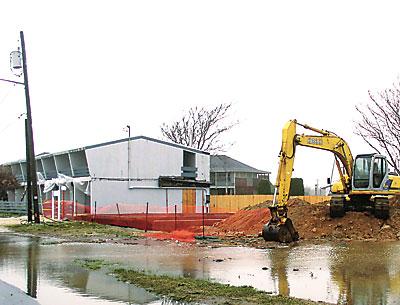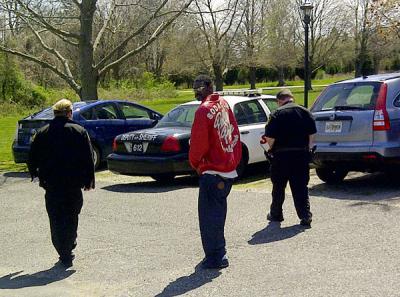The Lessons of the Manorville Fire
The Lessons of the Manorville Fire

The memory of early April’s major brush fire in Manorville may be receding, but preparations for an even greater fire are intensifying throughout South Fork fire departments. The fear of a blaze on the level of the Pine Barrens fire of 1995, when smoke from Hampton Bays could be seen at Montauk Point, persists, because despite Tuesday’s heavy rain, this year remains one of the driest in nearly three decades.
Measuring from January through April 21, 1995 was the fourth driest year recorded since the National Weather Service began compiling eastern Long Island records at MacArthur Airport in 1984, according to Michael Layer, a meteorologist with the service.
Even adding in Tuesday’s approximately .74 inch of rain, the first third of this year has been the second driest, Mr. Layer said Tuesday.
By the time August had rolled around in 1995, it had become the driest year on record for the time period, Mr. Layer said, making the risk of fire extraordinarily high.
Chief Richard Schoen of the Montauk Fire Department remembers the Pine Barrens fire clearly. “We spent three days there, camped out at Hampton Bays firehouse. There were probably 200 pieces of equipment.”
One of the two trucks lost during that blaze belonged to the Montauk department. As the trucks rolled toward the inferno, “the truck behind us got hung up on a log just when the wind, which was blowing northwest, blew northeast and blew right at them,” Chief Schoen said. The men had to run for their lives. When they returned, the vehicle was incinerated.
The chief also recalled the Hither Hills fire of 1986, another drought year. “It was set off by a train brake locked up and setting off sparks.”
When the brush is dry and the wind is blowing, one spark is all that is needed to start a blaze. The thought of such a fire in today’s Montauk gave Chief Schoen pause. “We have far more houses here south of the highway. It would be an issue,” he said.
The recent brush fire in Manorville, which many South Fork fire departments helped fight, could prove invaluable training if a catastrophic fire event does occur this year.
“The guys going up and into the woods and fighting the fire, that’s good experience,” said Tom Bono, the new chief of the East Hampton Fire Department. On April 16 at around 2:30 p.m., East Hampton sent a crew of eight or nine firefighters to the Manorville fire under the leadership of Ray Harden, the former chief. Chief Bono stayed in East Hampton and organized the relief crew.
“Everyone wanted to help, and share their expertise,” said Allen Bennett Jr., a captain with the Amagansett Fire Department at the time and now a second assistant chief. Mark Bennett, then the department’s chief, selected crews based on experience, also keeping in mind future shifts and potential needs in the home district.
The experience, said Allen Bennett Jr., was pretty intense. He was acting officer in charge of a brush truck sent to Manorville. In all, 30 members from his department assisted in that fire, splitting time between two shifts. Mr. Bennett was part of the first shift, which began at 4:30 p.m. on April 16, and fought the fire until 1 a.m., when the second shift came on. They stayed until nighttime operations were called off due to safety concerns.
Equipped with four-wheel-drive caged brush trucks designed to knock over trees, the Amagansett firefighters had followed the East Hampton Fire Department a mile and a half into the woods to the fire. A line of seven trucks continuously encircled the fire, spraying the ground with 600 gallons of water per truck, as embers fell from trees like orange rain, he recalled last month.
Mr. Bennett’s truck got a flat tire while deep in the woods, and at first, the firefighters did not know what went wrong. They heard a “pop” and “ashes were everywhere,” he said. They called back to Amagansett asking for a new tire, and drove out of the woods on three wheels behind an East Hampton truck that cleared the way, then changed the tire and went back into the maelstrom.
The Sag Harbor Fire Department was also activated on the afternoon of April 16, asked to send one engine truck with 15 firefighters to stand on call at the Hampton Bays firehouse, according to its chief, Peter Garypie. They were released from duty around 9:30 p.m., and were mobilized again at 5:15 a.m. on April 17, when they were asked to send a brush truck and tanker to Manorville.
Led by Chief Garypie and Jimmy Frazier, a second assistant chief, 16 members helped fight the fire until about 10:30 that morning, when they returned to the staging area while a helicopter dropped water. “They had most of it controlled,” the chief said, but the firefighters returned to the woods to extinguish spot fires and supply water with their tanker truck.
About half of the Sag Harbor crew has been with the department for five years or less, and the Manorville fire was an important experience for the department’s new members, Chief Garypie said. “Everyone came home safe,” he said, and “everyone did a phenomenal job.”
Balancing the needs of fighting a major fire to the west and protecting the houses and land that firefighters leave behind is one of the jobs of the district’s four Suffolk County department fire coordinators.
These coordinators, generally former chiefs, are elected by the department chiefs and confirmed by the town. They act as “super chiefs,” and must understand the needs of and be able to communicate with all the local departments, as well as the impacted fire zone.
“Once the local fire department finds out the scope of the event, they start calling in other resources,” Bruce Bates, one of the four coordinators and a member of the Springs Fire Department, said last Thursday. “They go through the county fire system. The county is divided up into [10] divisions.”
When a call comes from a division west of East Hampton, multiple layers of coordination are required. “If we send everything west, we have nothing left,” said Mr. Bates, who has been a coordinator for almost 17 years.
In the most recent fire, the Montauk brush truck was stationed in Amagansett, because it was the only brush truck left on the eastern part of the South Fork.
According to Chief Schoen of the Montauk Fire Department, a crew for the truck plus a chief spent roughly 24 hours on round-the-clock duty in the Amagansett firehouse, ready for action if a brush fire ignited in East Hampton town.
In East Hampton, Chief Bono had a pool contractor, Paul Hatch, station a water tanker truck of his own at the firehouse because the department’s vehicles were depleted, sure that the East Hampton Fire Department was prepared for any eventuality.
Springs sent one tanker with 3,000 gallons of water to the staging area for the Manorville fire, Chief Claflin said last Thursday. Because Springs is mostly residential, it does not have a brush truck, the chief explained. The Springs Fire Department’s job was to make sure the trucks in the field had full tanks of water.
“As chief, I can only organize and supervise a certain number of people. The coordinator makes all the decisions,” Chief Claflin said. The coordinator calling the shots on the scene during the recent fire was Kent Howie of the Amagansett Fire Department.
With that experience behind them, local departments are making preparations for a wildfire, but training can be a challenge. “You can’t set fire to the woods and put it out,” Chief Schoen said.
The departments are conducting various wildfire training sessions. “We did a drill on Monday [April 23] night with chain saw and all three brush trucks,” Chief Schoen said.
Another exercise the departments run in preparation for major fire events is a water-shuttle drill, where they practice transferring wter faro one tanker to another.
Proactive steps are being taken along the Long Island Rail Road tracks. “A lot of our brush fires occur along the tracks,” Chief Schoen said. The primary culprits, he explained, are sparks from the wheels and brakes, but lit cigarette butts tossed by passengers smoking between the cars is a cause as well. The tracks run through uninhabited thick brush. Engineers frequently spot these fires but have a hard time pinpointing their location to firefighters, with recognizable landmarks sometimes miles apart.
A solution being instituted by the Montauk firefighters in cooperation with the Boy Scouts and Eagle Scouts is old tech and reliable — numbered sign posts placed equidistant from Navy Road in Montauk to Amagansett, allowing the engineers to pinpoint a fire and report it to the local department.
Another solution, according to the chief, is for the town and state to keep the trails through the brush clear. “Maintaining the trails is important so that we have access to them,” he said.
But the best solution to the fire threat is out of the firefighters’ hands — rain, and a lot of it.

